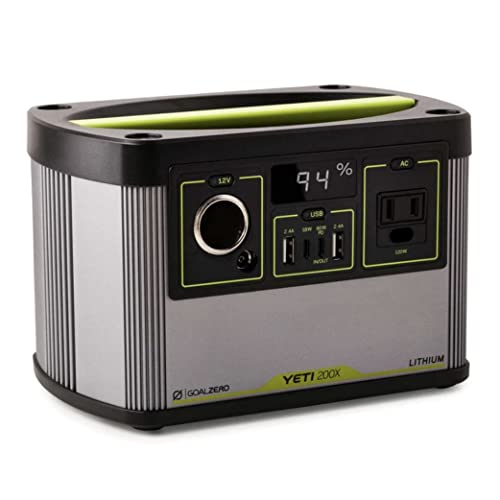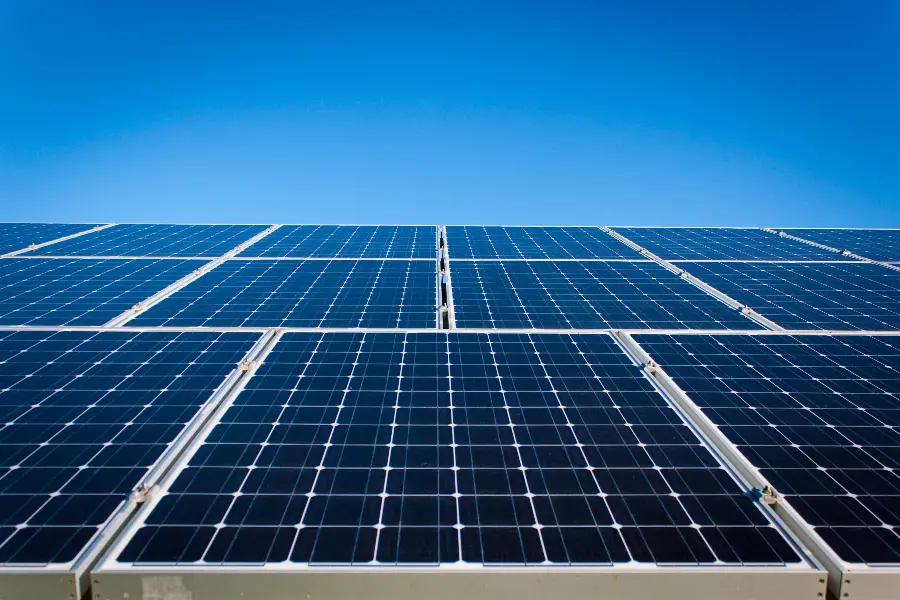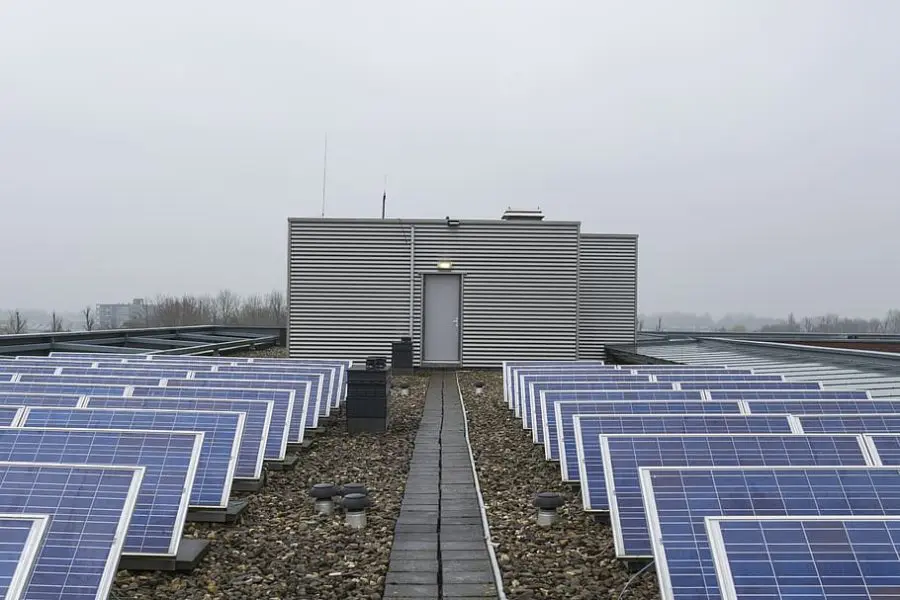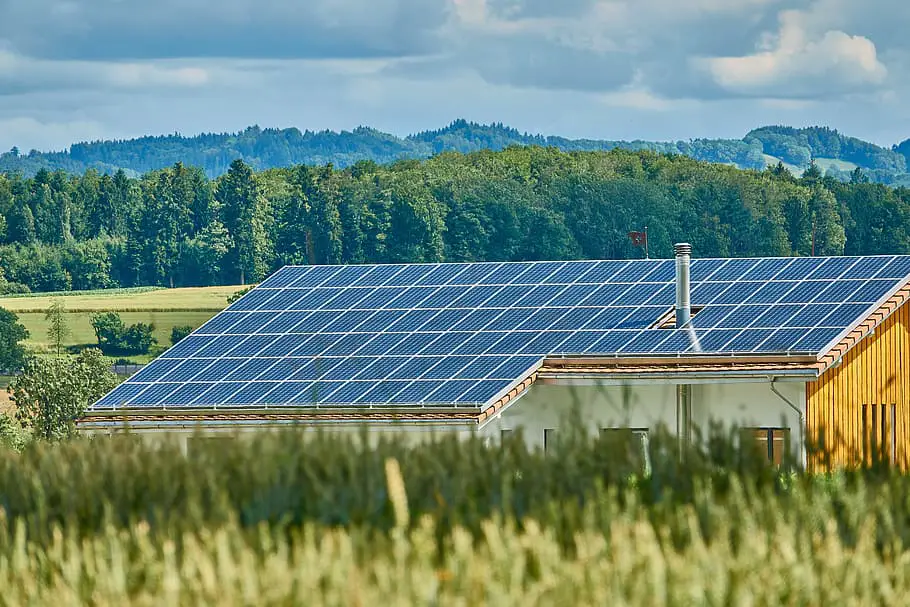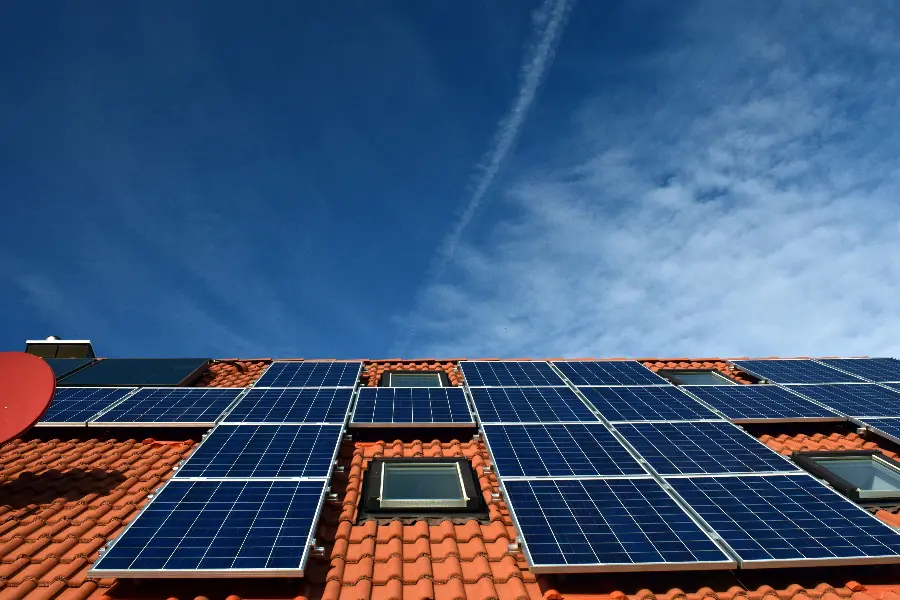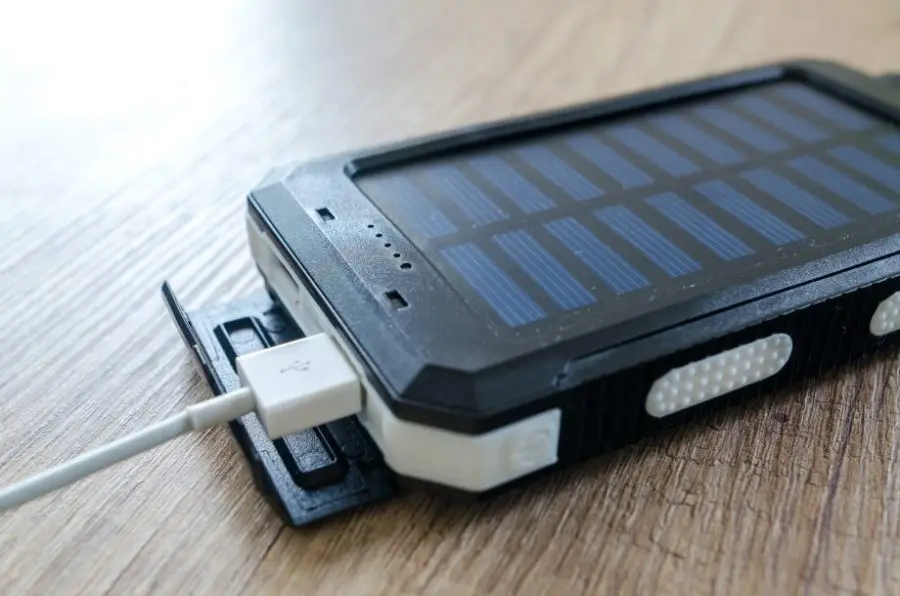
Discover the freedom of camping with portable solar power solutions for camping. Uncover the best products, tips, and tricks for a sun-powered adventure!
Are you ready to take your camping experience to the next level?
Imagine this: you’re out in the wilderness, completely off-grid, but your devices are fully charged, your camping lights are glowing, and you’ve got a hot cup of coffee in your hands.
Sounds like a dream, right? Well, with portable solar power solutions for camping, this dream can become a reality!
In this guide, we’ll explore how you can harness the power of the sun to keep your camping trip lit, connected, and full of life.
So, grab your backpack, and let’s embark on this sun-powered adventure together!
Portable Solar Power Solutions for Camping
Are you planning your next camping trip and considering how to keep your devices powered up? Well, you’re in the right place!
In this blog post, we’re going to dive deep into the world of portable solar power solutions for camping.
We’ll explore everything from the basics of solar power, and different types of portable solar solutions, to factors you should consider when choosing one.
We’ll also review some of the top products on the market and share tips on how to maximize their efficiency.
Plus, we’ll answer some frequently asked questions about solar power for camping.
So, whether you’re a seasoned camper or a newbie, this guide will help you harness the power of the sun for your next outdoor adventures.
Importance of Portable Solar Power for Camping
Imagine this: You’re out in the wilderness, surrounded by nothing but the sounds of nature.
It’s peaceful, it’s serene, but there’s one problem. Your phone’s battery is on its last legs, and you need it for navigation.
Or maybe you want to capture the breathtaking sunset with your camera, but it’s out of juice.
This is where portable solar power comes into play. It’s not just about convenience; it’s about safety too.
With portable solar power solutions, you can keep your devices charged and stay connected, even in the most remote locations.
Plus, it’s a green solution that’s kind to our planet, harnessing the power of the sun instead of relying on traditional, non-renewable energy sources.
Brief Overview of the Article
In this article, we’re going to take a closer look at portable solar power solutions for camping.
We’ll start by understanding the basics of solar power and how solar panels work.
Then, we’ll explore the different types of portable solar power solutions available, such as solar panels, power banks, generators, and the best solar chargers.
We’ll also discuss the factors you should consider when choosing a solar power solution, including power requirements, portability, efficiency, and cost.
We’ll review some of the top products on the market and share tips on how to maximize their efficiency.
Finally, we’ll answer some frequently asked questions about solar power for camping.
So, whether you’re a seasoned camper or a newbie, this guide will help you harness the power of the sun for your next outdoor adventure. Let’s dive in!
Understanding Solar Power
Ready to soak up some knowledge about solar power? Solar power is an incredible resource, especially when you’re out enjoying the great outdoors.
It’s clean, renewable, and best of all, it’s free once you’ve got the right equipment.
But how does it work? And why is it so important for camping? In this section, we’re going to delve into the basics of solar power, explain how solar panels work, and discuss why solar power is such a game-changer for camping enthusiasts.
Whether you’re a solar power veteran or a curious beginner, there’s always something new to learn. So, let’s shed some light on the subject!
Basics of Solar Power
Let’s start with the basics. Solar power is energy from the sun that is converted into thermal or electrical energy.
It’s the cleanest and most abundant renewable energy source available. The sun’s rays emit a type of energy called photons.
When these photons hit certain materials, they can knock electrons loose from their atoms.
When this happens, electricity is generated. That’s the basic principle behind solar power. Pretty cool, right?
How Solar Panels Work
Now, let’s talk about solar panels, the devices that capture and convert the sun’s energy into electricity.
Each solar panel is made up of many smaller units called solar cells.
These cells are essentially small, rectangular-shaped panels coated with a layer of silicon.
When sunlight hits a solar cell, it excites the electrons in the silicon, creating an electric current.
This current is captured by tiny wires in the cell and can then be used to power electrical devices.
The more sunlight the cells receive, the more electricity they can produce.
Importance of Solar Power in Camping
So, why is solar power so important for camping? Well, when you’re out in the wilderness, access to traditional power sources can be limited or non-existent.
That’s where solar power comes in. With a portable solar power solution, you can keep your devices charged and running, whether you’re hiking in the backcountry or camping in a remote site, and enjoy all your outdoor activities.
Plus, solar power is a clean, green energy source. By using solar power, you’re reducing your carbon footprint and helping to preserve the beautiful outdoor spaces that we all love to explore.
It’s a win-win situation!
Types of Portable Solar Power Solutions
Now that we’ve covered the basics of solar power, let’s dive into the exciting part, the different types of portable solar power solutions that you can bring on your camping trips.
From solar panels that can be folded up and tucked away in your backpack, to power banks that can keep your devices charged, there’s a solar solution for every type of camper.
Whether you’re planning a weekend getaway or a week-long backcountry expedition, the right solar power solution can make all the difference.
So, let’s explore the options and find the perfect solar companion for your next outdoor adventure!
Portable Solar Panels
Portable solar panels are a fantastic option for campers. They’re lightweight, and foldable solar panels and can be easily carried in your backpack.
A portable panel consists of small solar cells that capture sunlight and convert it into electricity. The great thing about portable solar panels is their versatility.
You can set them up wherever you get the best sunlight, and they can be used to charge a variety of devices, from smartphones and tablets to camping lights and GPS devices.
Plus, many models are designed to be weather-resistant, so they can withstand the occasional rain shower or dust storm.
Solar Power Banks
Next up, we have solar power banks. These are essentially portable batteries that can be charged up using solar power.
They’re perfect for storing solar energy during a sunny day and using it to charge your devices at night or during cloudy weather.
Solar power banks come in a range of sizes and capacities, so you can choose one that suits your power needs.
A portable power bank is compact, easy to carry, and many models come with multiple USB ports, allowing you to charge several devices at once.
Solar Generators
Solar generators are a bit larger and more powerful than solar panels or power banks.
They’re ideal for longer camping trips where you might need to power larger devices like a mini-fridge, small air conditioner, or a camping stove.
A portable solar generator is essentially a large battery pack that can be charged with solar panels.
Once charged a portable solar power station can provide a significant amount of power.
While they’re not as portable as solar panels or power banks, they’re a great solution for campers who need more power.
Solar Chargers
Last but not least, we have solar chargers. These are small devices that come with built-in solar panels.
They’re designed to charge specific devices, like cell phones or cameras.
Solar chargers are compact, lightweight, and perfect for keeping your essential devices charged on the go.
They’re a great option for hikers or backpackers who need to keep their devices charged without adding too much weight to their packs.
Factors to Consider when Choosing a Portable Solar Power Solution
Choosing the right portable solar power solution for your camping trip can feel a bit like navigating a maze.
With so many options out there, how do you decide which one is the best fit for your needs?
Well, it’s not as complicated as it might seem. There are a few key factors to consider that can help guide your decision.
Things like your power requirements, the portability and weight of the device, its efficiency and output, and of course, the cost.
In this section, we’re going to break down each of these factors, helping you understand what to look for and how to make the best choice for your next camping adventure. Let’s get started!
Power Requirements
The first thing you’ll want to consider is your power requirements. What devices will you need to charge, and how often?
A smartphone or a GPS device won’t require as much power as a mini-fridge or a camping stove.
Make a list of the devices you plan to use and estimate how much power they’ll need.
This will help you determine the capacity you’ll need from your solar power solution and avoid a power outage.
Remember, it’s always better to overestimate a bit to ensure you won’t run out of power when you need it most.
Portability and Weight
Next, consider the portability and weight of the solar power solution.
If you’re backpacking or hiking, you’ll want something lightweight and compact that won’t add too much weight to your pack.
Portable solar panels and solar chargers are great for this.
On the other hand, if you’re car camping or setting up a base camp for a few days, you might be able to accommodate a larger, more powerful solution like a solar generator.
Efficiency and Output
The efficiency and output of a solar power solution refer to how well it converts sunlight into usable electricity are important factors.
Higher efficiency means more power output for the same amount of sunlight. Look for a solution that has a high-efficiency rating.
Also, consider the output. Some devices only have USB outputs, while others might have AC outlets that can power larger devices.
Choose a solution that matches the input requirements of your devices.
Cost and Value
Finally, consider the cost and value of the solar power solution.
While it might be tempting to go for the cheapest option, remember that you often get what you pay for.
A more expensive model might be more durable, more efficient, and have a higher power output. Consider it an investment.
A good solar power solution can last for many camping trips, saving you money in the long run.
So, weigh the cost against the value and features of the device to make an informed decision.
Determining Your Power Requirements for Camping
When planning a camping trip, one of the most important things to consider is your power requirements.
Knowing how much power you’ll need can help you choose the right portable solar power solution and ensure you have enough power for all your devices.
But how do you figure out your power requirements? Let’s break it down.
List Your Devices
Start by making a list of all the devices you plan to use on your camping trip.
This might include your smartphone, tablet, laptop, camera, camping lights, GPS device, and any other electronic devices.
Don’t forget about small appliances if you’re planning to bring a mini-fridge, camping stove, or other larger items.
Check the Power Ratings
Next, check the power ratings for each of your devices. This is usually listed in watts (W) and can often be found on the device itself or in the user manual.
If the power rating is listed in amps (A), you can convert it to watts by multiplying the amps by the voltage. For example, if your device uses 2 amps at 5 volts, it uses 10 watts of power (2A x 5V = 10W).
Estimate Usage Time
Now, estimate how long you’ll be using each device each day. For example, you might use your smartphone for 3 hours, your camping lights for 5 hours, and your GPS device for 2 hours.
Calculate Total Power Requirements
Finally, multiply the power rating of each device by the number of hours you’ll use it to get the total power requirements for each device.
Then, add up the total power requirements for all your devices. This will give you an estimate of your total power requirements for each day.
For example, if your smartphone uses 10 watts and you use it for 3 hours, it will require 30 watt-hours (10W x 3h = 30Wh).
If your camping lights use 5 watts and you use them for 5 hours, they will require 25 watt-hours (5W x 5h = 25Wh).
So, your total power requirements for the day would be 55 watt-hours (30Wh + 25Wh = 55Wh).
Remember, it’s always a good idea to overestimate your power requirements a bit to account for inefficiencies and unexpected power needs.
By determining your power requirements, you can ensure you choose a portable solar power solution that will keep all your devices powered up during your camping trip. Happy camping!
Top Portable Solar Power Solutions for Camping
Now that we’ve covered the basics and explored the factors to consider when choosing a portable solar power solution, let’s get to the exciting part – the top portable solar power solutions for camping!
These are the best solar panels that stand out from the crowd, the ones that deliver on their promises and have won the hearts of campers around the world.
We’ve done the research and sifted through the options to bring you a review of the best products on the market.
Amazon is a great place to shop for portable solar panels for camping.
They have a large selection and you can read actual user reviews so while we have selected a few top products feel free to make your own choices too.
We’ll also discuss the pros and cons of each product to help you make an informed decision.
So, let’s dive in and discover the solar power solutions that can take your camping experience to the next level!
Review of Top Products Based on the Research
Jackery SolarSaga Portable Solar Panel: This portable solar panel system is a favorite among campers for its high efficiency and durability.
It’s designed with high conversion efficiency up to 23%, which means it can generate more electricity for the same amount of sunlight compared to other products.
It’s also lightweight and foldable, making it easy to carry on your camping trips.
Goal Zero Yeti 150 Portable Power Station: This solar generator is a powerhouse.
It has a 150Wh capacity, which is enough to charge your smartphone, tablet, and laptop multiple times.
It also has a variety of output options, including AC, 12V, and USB, making it versatile and suitable for powering a wide range of devices.
Anker PowerPort Solar Charger: This solar charger is compact, lightweight, and perfect for charging your small devices like smartphones and tablets.
It has a high energy conversion rate, and it’s designed with durable, weather-resistant materials.
Solar Charger Solar Power Bank: This power bank is a great option for storing solar energy.
It has a large capacity, multiple USB ports, and it’s also equipped with a flashlight, making it a handy tool for camping.
Pros and Cons of Each Product
Jackery SolarSaga Portable Solar Panel
Pros: High efficiency, lightweight, foldable, durable
Cons: Higher price point, requires a lot of sunlight for optimal performance
Goal Zero Yeti 150 Portable Power Station
Pros: High capacity, versatile output options, durable
Cons: Heavy, takes a long time to charge
Pros: Compact, lightweight, high energy conversion rate, durable
Cons: Only suitable for small devices, requires direct sunlight for optimal performance
Solar Charger Solar Power Bank
Pros: Large capacity, multiple USB ports, built-in flashlight
Cons: Takes a long time to charge, heavier than other power banks
Remember, the best product for you depends on your specific needs and circumstances.
Consider the factors we discussed earlier, like your power requirements, the portability and weight of the device, its efficiency and output, and the cost and value.
How to Maximize the Efficiency of Your Solar Power Solution
So, you’ve chosen your perfect portable solar power solution and you’re ready to hit the great outdoors. But wait!
Before you go, let’s talk about how to get the most out of your new solar companion.
Maximizing the efficiency of your solar power solution can make a big difference in your camping experience.
It can mean the difference between having a fully charged phone or a dead battery, a warm meal, or a cold one.
In this section, we’ll share some tips and tricks on how to properly position your solar panels, maintain them, and even combine them with other power solutions to ensure you’re never left in the dark. Let’s get started!
Proper Positioning of Solar Panels
The position of your solar panels can significantly impact their efficiency.
For the best results, you should aim to position your panels so they’re directly facing the sun.
Remember, the sun moves throughout the day, so you might need to adjust the position of your panels a few times to keep them in the optimal position.
Also, try to place your panels in an open area where they won’t be shaded by trees or other obstacles.
Even a little bit of shade can significantly reduce the amount of power your panels can generate.
Maintenance and Care
Taking good care of your solar power solution can also help maximize its efficiency.
Keep your solar panels clean and free of dust and dirt, as these can block sunlight and reduce the amount of power your panels can generate.
It’s also a good idea to check your panels regularly for any signs of damage.
If you notice any issues, it’s best to address them as soon as possible to prevent further damage and maintain the efficiency of your panels.
Combining with Other Power Solutions
Finally, consider combining your solar power solution with other power solutions.
For example, you might use a solar power bank to store the energy your panels generate during the day, and then use this stored energy to power your devices at night or during cloudy weather.
Or, if you’re camping in a location with access to electricity, you might use your solar power solution as a backup power source.
By combining different power solutions, you can ensure you always have a reliable source of power, no matter the circumstances.
FAQs
We’ve covered a lot of ground so far, but you might still have a few questions. And that’s great!
Asking questions is how we learn and grow. In this section, we’re going to tackle some of the most frequently asked questions about portable solar power solutions for camping.
From figuring out how many watts you need for camping to understanding the worth of portable solar power banks, we’ve got you covered.
So, let’s dive into the FAQs and clear up any lingering uncertainties you might have!
Q: How many watts of solar do I need for camping?
A: The number of watts you’ll need depends on the devices you plan to power and how often you’ll use them.
For example, charging a smartphone might require around 5-8 watts, while a laptop might need around 50-60 watts.
It’s a good idea to make a list of your devices and their power requirements, then add up the total.
Remember to account for the fact that solar panels might not always operate at their maximum output due to weather conditions or other factors.
Q: How much solar do I need for off-grid camping?
A: Off-grid camping usually requires more power since you’ll be relying solely on your solar setup for all your power needs.
Again, you’ll need to consider the devices you’ll be using, how often you’ll use them, and how many days you’ll be camping.
A larger solar panel setup or a solar generator might be necessary for longer off-grid trips.
Q: Do cheap portable solar panels work?
A: While cheaper solar panels can work, they usually are not the best portable solar panels and they often have lower efficiency and may not be as durable or reliable as more expensive solar power stations.
They might also lack features like weather resistance or multiple output options. It’s important to consider the value and reliability of the product, not just the price.
Q: Are portable solar power banks worth it?
A: Absolutely! Portable solar power banks can be a great investment for camping trips.
They allow you to store solar energy during the day and use it to power your devices at night or during cloudy weather.
They’re also compact and easy to carry, making them a convenient power solution for camping.
However, as with any product, it’s important to choose a power bank that suits your specific needs and to consider factors like battery capacity, output options, and durability.
Conclusion
We’ve journeyed through the world of portable solar power solutions for camping, from understanding the basics of solar power to exploring different types of solutions, and even answering some frequently asked questions.
It’s been quite an adventure, hasn’t it? But as with any good journey, it’s time to wrap things up.
In this concluding section, we’ll recap the importance and benefits of portable solar power solutions for camping and share some final thoughts and recommendations.
So, let’s bring this enlightening journey to a close!
Recap of the Importance and Benefits of Portable Solar Power Solutions for Camping
Portable solar power solutions have truly revolutionized the way we camp.
They’ve made it possible to enjoy the great outdoors without sacrificing the convenience of modern technology.
With portable solar power, you can keep your devices charged, stay connected, and even power larger appliances, all while reducing your carbon footprint.
It’s a win for you and a win for the environment!
Final Thoughts and Recommendations
As we wrap up, it’s important to remember that the best portable solar power solution for you depends on your specific needs.
Consider your power requirements, the types of devices you’ll be using, and the conditions you’ll be camping in.
And remember, investing in a high-quality solar power solution can save you money in the long run and enhance your camping experience.
So, whether you’re a seasoned camper or a newbie, we hope this guide has shed some light on the world of portable solar power solutions for camping.
Here’s to your next sun-powered adventure!
Read more: Solar Energy for Home and Business: 20 Solar Power Tips









